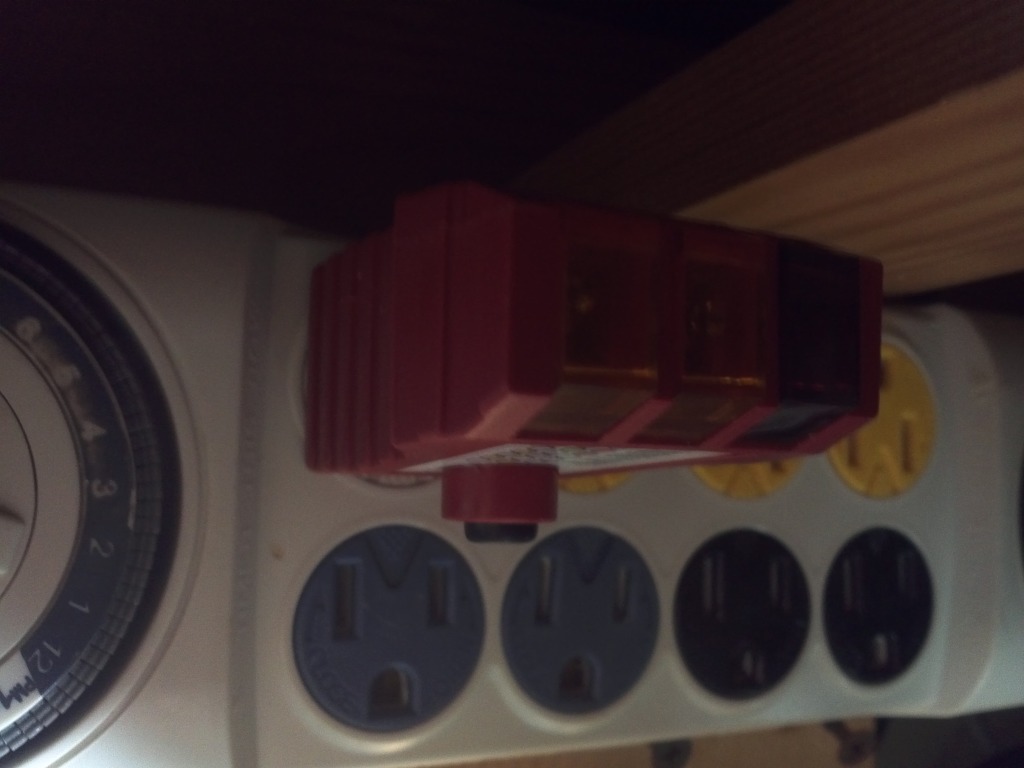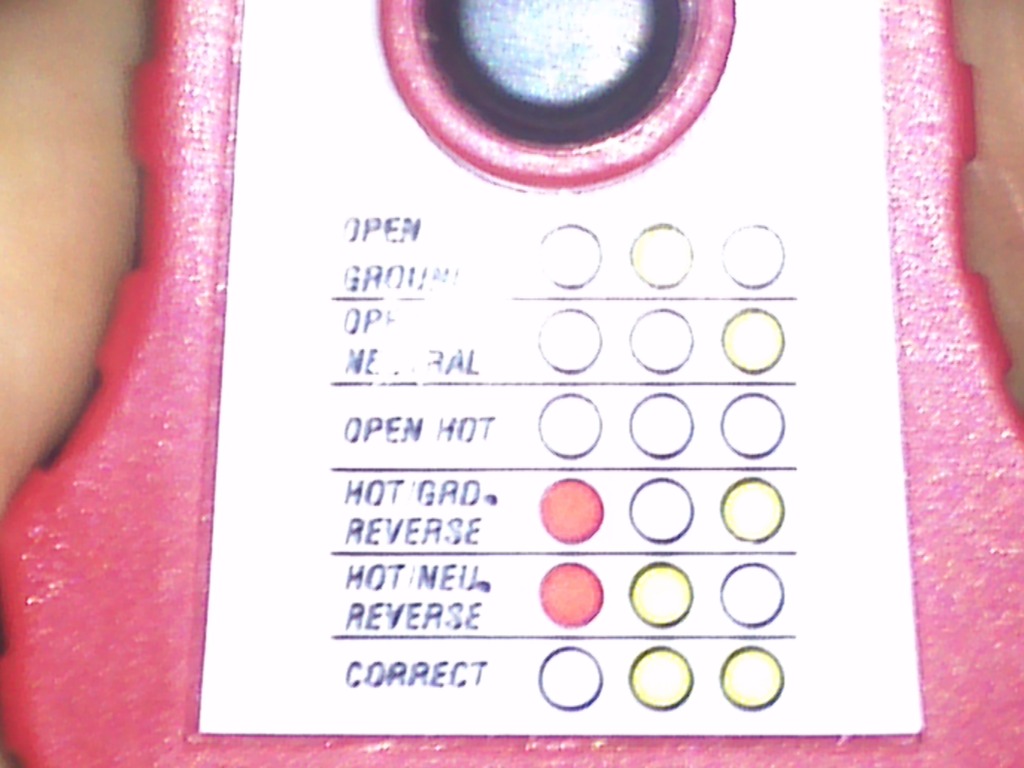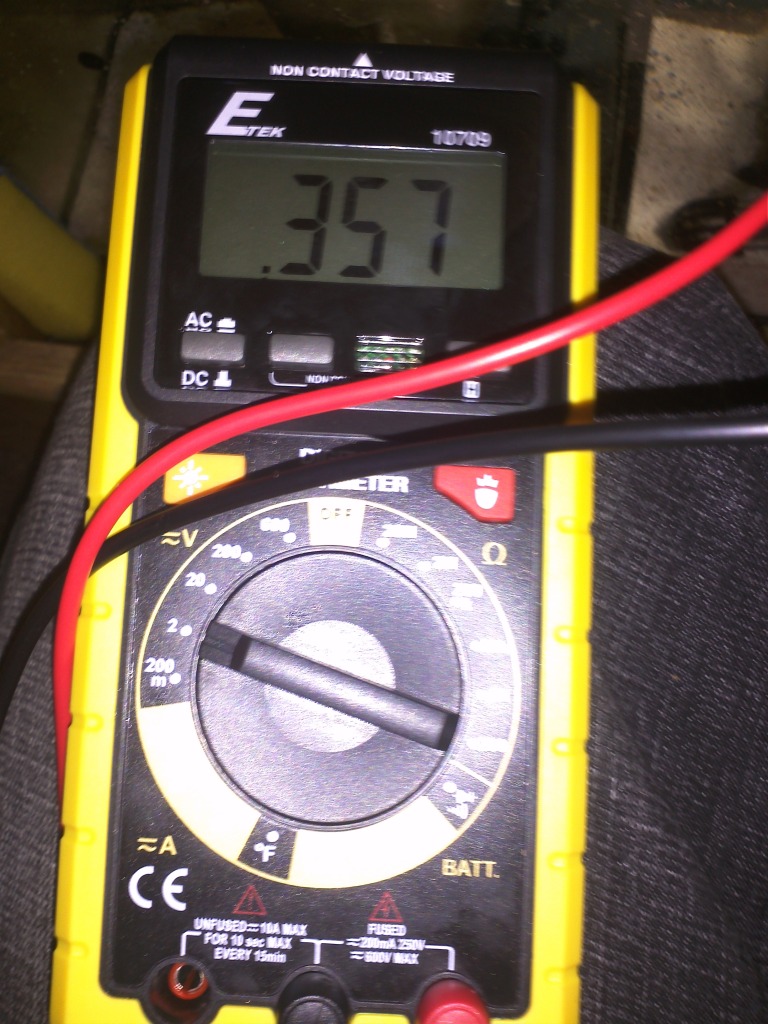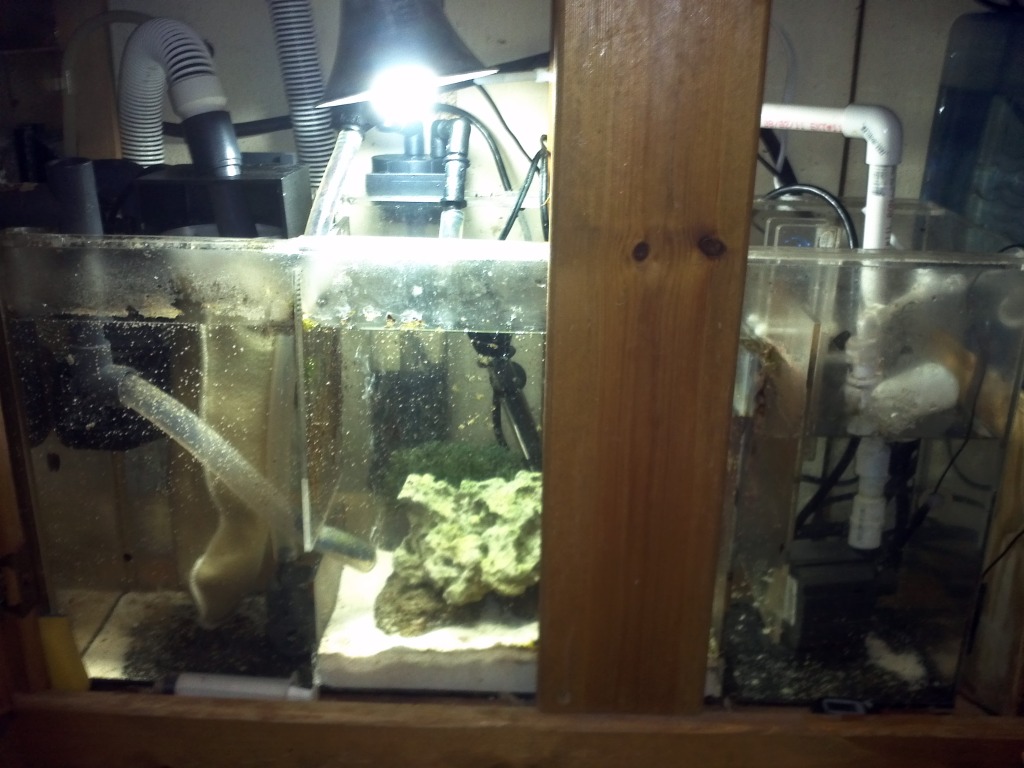You are using an out of date browser. It may not display this or other websites correctly.
You should upgrade or use an alternative browser.
You should upgrade or use an alternative browser.
stray voltage levels in saltwater aquarium
- Thread starter scottayy
- Start date
The friendliest place on the web for anyone with an interest in aquariums or fish keeping!
If you have answers, please help by responding to the unanswered posts.
If you have answers, please help by responding to the unanswered posts.
What's the best way to test? I get the highest results just putting the black probe on my finger. I get lower results if I put it in the ground plug of an outlet, and even lower if I touch it to a screw or something.
Gregcoyote
Aquarium Advice Addict
Your black wire should go to a good ground. That will show the voltage potential. IMO, if you can feel ANY tingling in the water, it is too much no matter what the meter reads.
Yeah, I agree.
Well I just tested again. Didn't feel any tingling in the sump this time. I'm going to plug in the heater that I unplugged and see if i feel the tingling again.
So, how do I interpret these results?
meter set on 600 - reads 004
meter set on 200 - reads 5.8
meter set on 20 - reads 6.47
meter set on 2 - reads "1."
meter set on 200m - reads "1 ."
What is my voltage?
Well I just tested again. Didn't feel any tingling in the sump this time. I'm going to plug in the heater that I unplugged and see if i feel the tingling again.
So, how do I interpret these results?
meter set on 600 - reads 004
meter set on 200 - reads 5.8
meter set on 20 - reads 6.47
meter set on 2 - reads "1."
meter set on 200m - reads "1 ."
What is my voltage?
Alright I hooked the meter up to an outlet because I knew that should be around 120. My meter reads like 120.1 or somewhere around there. So I guess the number it gives me is volts. And if it's too high it reads "1".
That would mean that earlier today my tank had 104mV and when I read it most recently it had 6.47v.
What is the deal?
That would mean that earlier today my tank had 104mV and when I read it most recently it had 6.47v.
What is the deal?
Gregcoyote
Aquarium Advice Addict
I tend to work in bare feet in my fish room which has a concrete floor and a little saltwater on it anytime I am working. I don't ever want to feel any electrical discharge even with wet feet.
I use a chiller and don't use a heater unless it gets real cold, then it is a inline heater. I don't trust heaters. I also have everything running thru GFI breakers.
A good experiment is unplugging everything for a few minutes and take a reading from there. No matter what scale you are on, it is zero potential as there is no power connected to the entire system. Then see how much it climbs as you plug each device back in.
I use a chiller and don't use a heater unless it gets real cold, then it is a inline heater. I don't trust heaters. I also have everything running thru GFI breakers.
A good experiment is unplugging everything for a few minutes and take a reading from there. No matter what scale you are on, it is zero potential as there is no power connected to the entire system. Then see how much it climbs as you plug each device back in.
Yeah I did that on page two, greg  Each device climbs a few volts.
Each device climbs a few volts.
I found *a* problem. Though it's not the problem (at least I don't think - does saltwater "hold" stray voltage for a period of time?). This outlet on my timer power strip didn't light up the LED's on the light tester. And it tests low on the digital multimeter though all of my other outlets test around 122 volts.
This is bad news, right?
Outlet Tester plugged in

No lights. The back indicates this would mean open hot.. however I just don't think it's getting enough power.

Sticking each probe directly into the outlet it reads .357 volts

I have it unplugged for now and will check later.
I found *a* problem. Though it's not the problem (at least I don't think - does saltwater "hold" stray voltage for a period of time?). This outlet on my timer power strip didn't light up the LED's on the light tester. And it tests low on the digital multimeter though all of my other outlets test around 122 volts.
This is bad news, right?
Outlet Tester plugged in

No lights. The back indicates this would mean open hot.. however I just don't think it's getting enough power.

Sticking each probe directly into the outlet it reads .357 volts

I have it unplugged for now and will check later.
Gregcoyote
Aquarium Advice Addict
I might try another power strip and be sure it hasn't gotten wet.
I get a new power strip. Used my outlet tester to make sure it was good and then used the voltage meter to check each outlet on it.
Everything was fine.
I then unhooked everything from all power strips. Took all equipment out of the tank, wiped down the wires, and redid my electrical wiring to make it tidier.
I found a koralia 750 wire going inbetween the tank and stand. No way I was getting that out of there so I cut the cord and used vice grips to pull the remaining wire out of there. Don't know how that happens but even if that wasn't the source of my problem it's still definitely not a good thing.
Unplugged the main cord to the outlet.
Everything is off. Nothing even going to the outlet! Still read .5 volts in the water??
Tested each equipment one by one. Everything gives off a volt or two. Things giving off more than 4 volts were my reactor pump, and two heaters.
Right now the only thing I have hooked up is my return pump and one koralia 750 and I'm still reading about 7 volts. Everything else is unplugged again and out of the tank for the time being.
This is frustrating the heck out of me!!!!! I just spent about 5 hours on it and came away with less knowledge than when I started.
Everything was fine.
I then unhooked everything from all power strips. Took all equipment out of the tank, wiped down the wires, and redid my electrical wiring to make it tidier.
I found a koralia 750 wire going inbetween the tank and stand. No way I was getting that out of there so I cut the cord and used vice grips to pull the remaining wire out of there. Don't know how that happens but even if that wasn't the source of my problem it's still definitely not a good thing.
Unplugged the main cord to the outlet.
Everything is off. Nothing even going to the outlet! Still read .5 volts in the water??
Tested each equipment one by one. Everything gives off a volt or two. Things giving off more than 4 volts were my reactor pump, and two heaters.
Right now the only thing I have hooked up is my return pump and one koralia 750 and I'm still reading about 7 volts. Everything else is unplugged again and out of the tank for the time being.
This is frustrating the heck out of me!!!!! I just spent about 5 hours on it and came away with less knowledge than when I started.
From extensive googling it appears that not much is known about this subject.
Some even say that 20, 40, or 60 combined stray voltage is good.
Could you guys test your tank with a digital multimeter with everything running and tell me what you get?
Some even say that 20, 40, or 60 combined stray voltage is good.
Could you guys test your tank with a digital multimeter with everything running and tell me what you get?
Gregcoyote
Aquarium Advice Addict
Will do tonight.
Cleaned up my electrical  Only wires in the sump need to be and their excess is wrapped behind the sump. Don't have a drip loop set up at the moment but that's my next plan.
Only wires in the sump need to be and their excess is wrapped behind the sump. Don't have a drip loop set up at the moment but that's my next plan.
Got rid of one power strip by using 3 way adapters. Convenient because so many things draw so little power.
Unplugged 2 heaters and 2 koralias (replacing one of the koralias).
I now read between 2 and 18 volts at any given time. Something is fluctuating.. hard to tell what.
I no longer feel the shock in the sump, although I did try to (lol!) so I knew what the offending piece of equipment was. No such luck!
Interested to see others readings.
I know greg is and possibly meegosh or phranque.. everyone else bust out your multimeters and stick 'em in your tanks.

Got rid of one power strip by using 3 way adapters. Convenient because so many things draw so little power.
Unplugged 2 heaters and 2 koralias (replacing one of the koralias).
I now read between 2 and 18 volts at any given time. Something is fluctuating.. hard to tell what.
I no longer feel the shock in the sump, although I did try to (lol!) so I knew what the offending piece of equipment was. No such luck!
Interested to see others readings.
I know greg is and possibly meegosh or phranque.. everyone else bust out your multimeters and stick 'em in your tanks.

kdpuffer
Aquarium Advice Addict
Well I've read through this entire thread and here i what I have to contribute. Firstly lets clarify a few things- the voltage your reading from the water to the ground on your outlet is potential voltage and even after removing all the equipment in your tank you will still read the voltage potential unless you discharge it by running some piece of metal or other conductive material from the tank water to your ground on your outlet. This will remove any stray voltage in the water until you plug something back in. Also current (amperes, or amps) is not present until you have a path back to ground which is what a ground probe will do and that's bad. Current is what kills, as little as 4 milliamps. Now as far and GFCI receptacles go they are your best safety however I would hook up at least a couple and make sure to have a powerhead hooked to each one that way if one trips while your at work you still have circulation in your tank. I'm not sure why you have such high voltage in your tank but it has to be something faulty. You will get some stray voltage potential by having equipment in the tank, any sort of motor will create more such as powerheads and pumps. The voltage these create should be minimal somewhere in the millivolt range.
Hocky puck
Aquarium Advice Freak
- Joined
- Aug 15, 2012
- Messages
- 293
I'll second that
kdpuffer
Aquarium Advice Addict
Something else I forgot to add is that a GFCI is a waste of money if you don't have a bond back to the ground in the panel. Without a proper ground it won't work properly.
nikki_kaiser
Aquarium Advice FINatic
kdpuffer said:Well I've read through this entire thread and here i what I have to contribute. Firstly lets clarify a few things- the voltage your reading from the water to the ground on your outlet is potential voltage and even after removing all the equipment in your tank you will still read the voltage potential unless you discharge it by running some piece of metal or other conductive material from the tank water to your ground on your outlet. This will remove any stray voltage in the water until you plug something back in. Also current (amperes, or amps) is not present until you have a path back to ground which is what a ground probe will do and that's bad. Current is what kills, as little as 4 milliamps. Now as far and GFCI receptacles go they are your best safety however I would hook up at least a couple and make sure to have a powerhead hooked to each one that way if one trips while your at work you still have circulation in your tank. I'm not sure why you have such high voltage in your tank but it has to be something faulty. You will get some stray voltage potential by having equipment in the tank, any sort of motor will create more such as powerheads and pumps. The voltage these create should be minimal somewhere in the millivolt range.
I read the following link and there was mention of some kind of grounding rod you could put outside. If you did this, would you in essence ground your tank without the risk of endangering your fish? Read the first question...
www.wetwebmedia.com/grdprobeaq.htm
Gregcoyote
Aquarium Advice Addict
A external ground rod would be better than nothing. But the electrical circuits in your house should be grounded anyway. It is a major safety concern.
As said, a GFI is only good if there is a good house ground for it connect to.
Yes, a tank can hold (like a capacitor) a very small amount of voltage even with everything unplugged. But the rise you see in voltage as you plug in things is very real. It is additive. Any one piece might not be that bad, but added together, it makes enough current for you to feel it.
As said, a GFI is only good if there is a good house ground for it connect to.
Yes, a tank can hold (like a capacitor) a very small amount of voltage even with everything unplugged. But the rise you see in voltage as you plug in things is very real. It is additive. Any one piece might not be that bad, but added together, it makes enough current for you to feel it.
kdpuffer
Aquarium Advice Addict
Ground probe is a BAD idea. Stray voltage is a sign of something being wrong but it's not electrocuting anything until its given a return path to ground. Whether that be a ground probe or your hand when you stick it into the tank. Once there is a path to ground it completes the circuit and that's when the current flows. Once you have current is when things start to die. Whether the ground probe is in the tank or out of it you provide a path to ground and hence give the current a path to flow. Without a completed circuit you won't have current. I don't know why they sell ground probes because they are a bad idea, but if you put something on the market and people buy it why would you stop selling it.
kdpuffer
Aquarium Advice Addict
Here is another way to look at the situation. Think of electricity like water. You have your garden hose and that's your "wire". When you turn on the tap you have water flow this is your voltage and your pressure is the current. You have a nozzle on the end of the hose and you stop the water flow you stop the pressure. Same holds true with electricity, if it doesn't have a path to ground it can't flow and hence can't electrocute anything, put a ground probe on and you have basically removed your nozzle so the voltage flows as does the current.
Similar threads
- Replies
- 3
- Views
- 397
- Replies
- 4
- Views
- 1K
- Replies
- 7
- Views
- 350
- Replies
- 1
- Views
- 650
